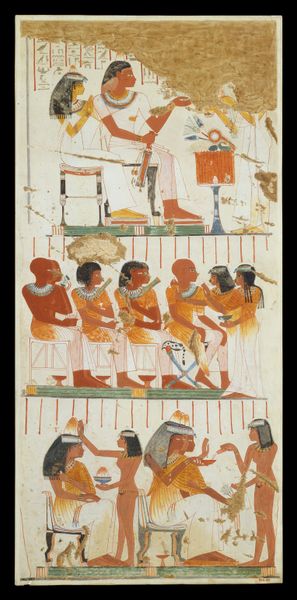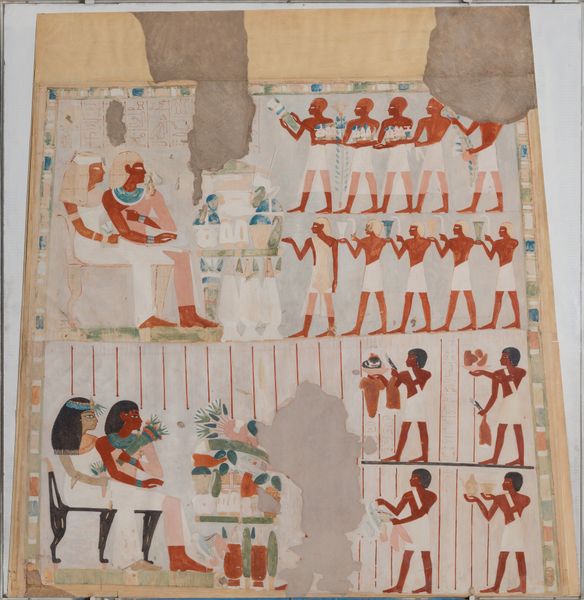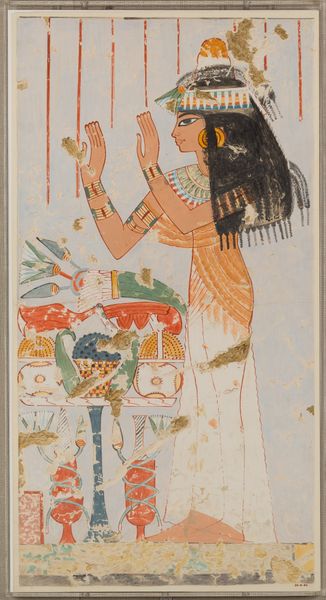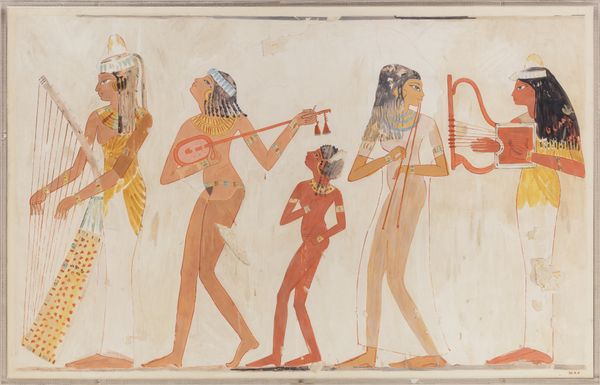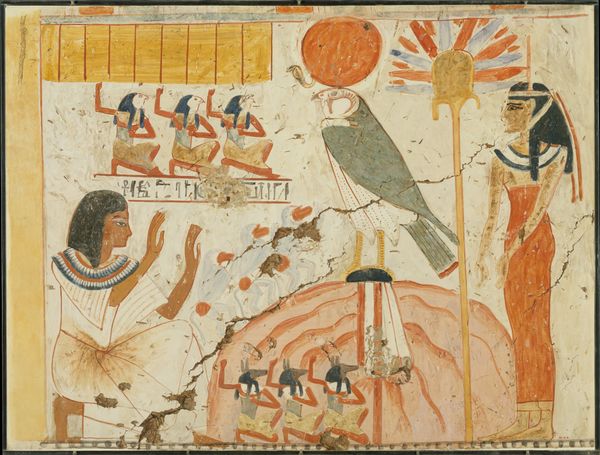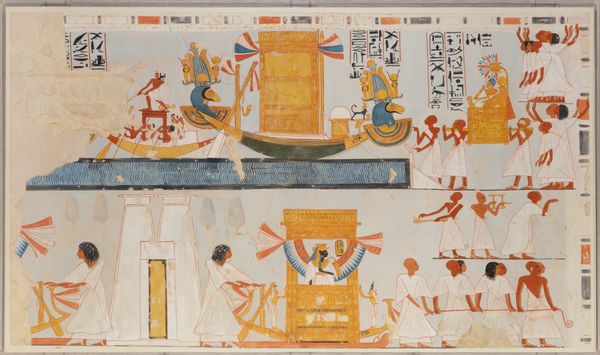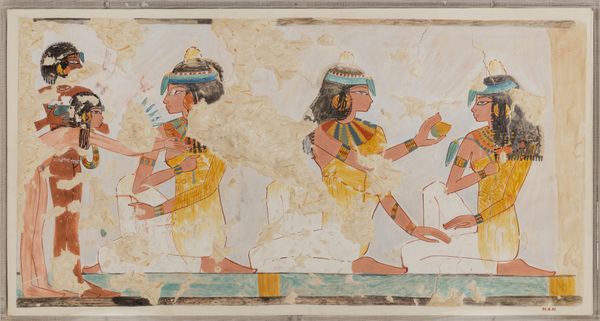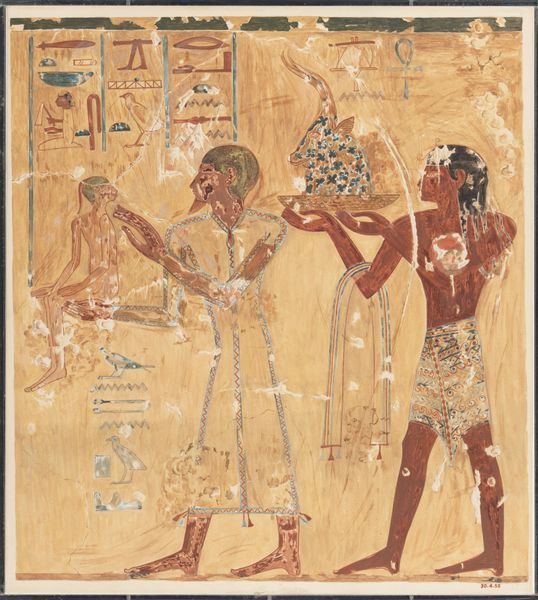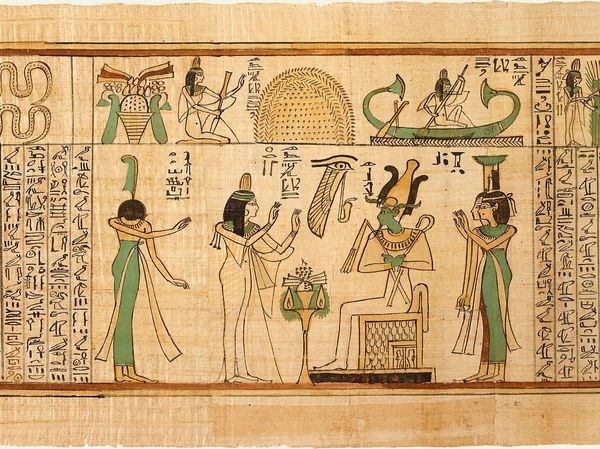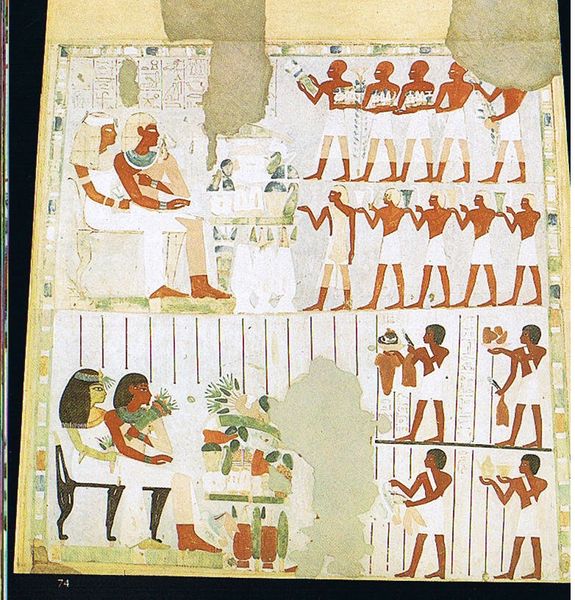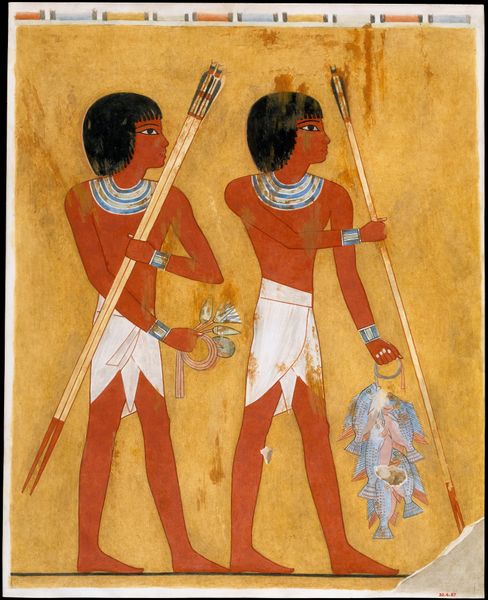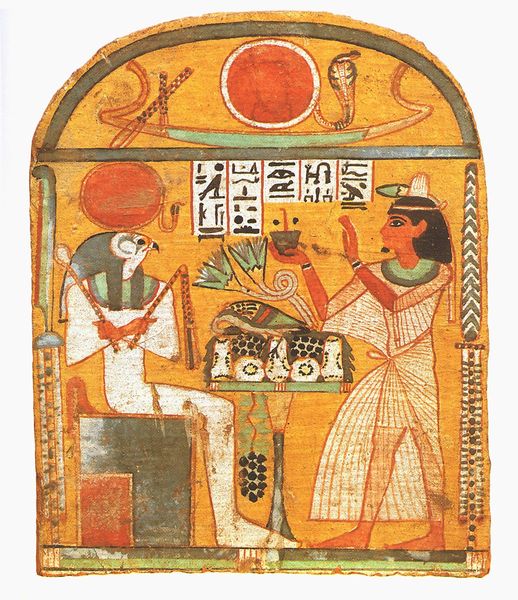
watercolor, ink
#
portrait
#
narrative-art
#
ancient-egyptian-art
#
oil painting
#
watercolor
#
ink
#
egypt
#
coloured pencil
#
ancient-mediterranean
#
men
#
mixed media
Dimensions: facsimile: h. 92 cm (36 1/4 in); w. 64.5 cm (25 3/8 in), scale 1:1; framed: h. 95.3 cm (37 1/2 in); w. 67.3 cm (26 1/2 in)
Copyright: Public Domain
Curator: This wall painting, "Nebamun Receiving Wine," created around 1390 BC, offers a glimpse into ancient Egyptian life, specifically that of the elite. It’s currently housed in the Metropolitan Museum of Art. Editor: My first impression is of serene composure amidst activity. The colors are remarkably preserved; that burnt orange is striking against the white garments. And those are some seriously heavy chairs. Curator: Indeed. Considering the social hierarchy, this scene reflects Nebamun’s elevated status, doesn’t it? Wine was likely reserved for special occasions, symbolizing power and privilege. Editor: Absolutely, and the materials themselves underscore that privilege. We know from archeological records the methods used to mix pigments with binding agents; access to such would have been stratified by labor and production means. Look closely at the linear application; that's deliberate control of scarce resources to make meaning. Curator: It is interesting to consider the roles of women as represented here. They are present, attending to Nebamun, but also occupy a different space within the composition, a space defined by service. It speaks to broader power dynamics, even in moments of leisure. Editor: And what was involved in making that gold cup that one of the women is bringing to him? We can’t divorce its beauty from the manual labor required for extraction, refinement, and forming the object. Even something as seemingly celebratory involves chains of work and production. Curator: I agree that seeing art through this material lens gives us so much insight. To consider the painting within its broader social and historical context reveals complexities in an environment often defined by strict rules of representation. Editor: Examining the production process lets us engage not just with aesthetic intention, but with labor itself; this approach is central to appreciating Egyptian society's intricacies. This panel's enduring power for me is its subtle dance between luxurious presentation and the sheer volume of materials and people making it so. Curator: It's a scene ripe with information, isn't it? Contemplating power, material culture and ancient roles makes even a scene of apparent relaxation unexpectedly rich.
Comments
No comments
Be the first to comment and join the conversation on the ultimate creative platform.
